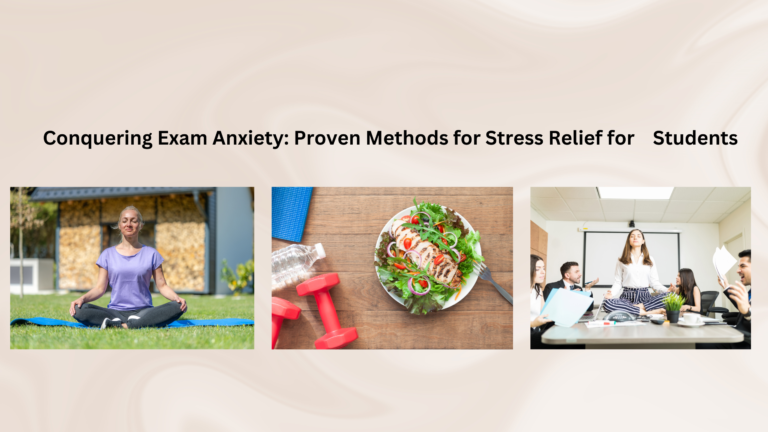Balancing Academics and Social Life
Navigating the intricate labyrinth of academic responsibilities while maintaining a vibrant social life can be a daunting task. The challenge of balancing academics and social life is a universal conundrum faced by students worldwide.

The pursuit of academic success often seems to be at odds with the desire for a fulfilling social life. Yet, achieving a harmonious blend of both is not only possible but also essential for overall well-being and life satisfaction.
This article delves into the art of striking a balance between academics and social activities. It offers a comprehensive exploration of strategies and techniques to manage time effectively, prioritize tasks, and integrate social engagements into a busy academic schedule.
Whether you are a student grappling with this balance, an academic professional, or an educational counselor, this article provides valuable insights. It aims to equip you with the tools to navigate the delicate equilibrium between academic success and social fulfillment.
The Imperative of Equilibrium: Why Balance is Essential
The importance of balancing academics and social life cannot be overstated. It is a critical aspect of work-life balance that significantly impacts a student’s mental health, academic performance, and long-term career prospects.
A well-balanced lifestyle fosters resilience, reduces stress, and enhances productivity. It allows students to excel in their academic pursuits while also enjoying a rich social life. Thus, achieving this equilibrium is not merely a desirable goal but an essential component of a fulfilling and successful student life.
Establishing Priorities: The Foundation of Balance
The first step towards achieving a balanced lifestyle is to establish clear priorities. This involves identifying what is most important to you in both your academic and social life.
By setting priorities, you create a roadmap for your time and energy. This not only helps in managing your academic responsibilities effectively but also ensures that you have sufficient time for social activities. Thus, prioritization forms the foundation of a balanced academic and social life.
Mastering Time Management: The Keystone of Work-Life Harmony
Time management is the keystone of achieving work-life harmony. It involves planning and controlling how much time to spend on specific activities. Good time management enables you to work smarter, not harder, so that you get more done in less time, even when time is tight and pressures are high.
Effective time management not only helps in enhancing your productivity and academic performance, but it also leaves you with ample time to engage in social activities. Thus, mastering time management is crucial for maintaining a healthy balance between academics and social life.
Strategic Scheduling: Integrating Academics and Social Engagements
Strategic scheduling is a critical aspect of integrating academics and social engagements. It involves planning your activities in a way that optimizes your time and energy. This can be achieved by using planners or digital calendars to keep track of your academic deadlines and social events.
By allocating specific time slots for studying, relaxation, and social activities, you can ensure that neither your academic responsibilities nor your social life is compromised. This way, strategic scheduling can help you maintain a healthy balance between your academic pursuits and social engagements.
The Psychological Interplay: Academic Motivation and Social Fulfillment
The psychological interplay between academic motivation and social fulfillment is a crucial factor in balancing academics and social life. Maintaining a social life can provide the necessary motivation to excel academically. Social interactions can serve as a source of inspiration, stress relief, and a sense of belonging, all of which can enhance academic motivation.
Conversely, academic success can contribute to social fulfillment. Achieving academic goals can boost self-esteem and confidence, which can positively impact social interactions. Therefore, a balanced approach to academics and social life can lead to a cycle of mutual reinforcement, enhancing both academic motivation and social fulfillment.
Quality Versus Quantity: Maximizing the Value of Time
In the quest for balancing academics and social life, the concept of quality over quantity is paramount. It’s not about spending countless hours studying or attending every social event. Instead, it’s about maximizing the value of the time spent on each activity. Effective studying techniques can reduce the time spent on academics, leaving more time for social activities.
Similarly, quality over quantity applies to social interactions. It’s not about having a large number of friends or attending every party. Instead, it’s about forming meaningful relationships and participating in fulfilling social activities. This approach can lead to a more satisfying social life without compromising academic success.
Goal-Setting and Self-Awareness: Navigating Academic and Social Milestones
Goal-setting is a powerful tool for achieving balance between academics and social life. By setting clear, achievable goals for both academic and social activities, students can create a roadmap for success. This approach allows for a structured plan that accommodates both aspects of a student’s life, reducing the risk of neglecting one area for the other.
Self-awareness is equally crucial in this balancing act. Recognizing one’s limits and understanding when to take a break can prevent burnout. It’s essential to listen to one’s body and mind, taking time to rest and recharge when needed. This self-awareness can lead to a more sustainable and balanced lifestyle.
The Role of Technology: Enhancing or Impeding Balance?
Technology plays a dual role in the quest for balance between academics and social life. On one hand, it offers tools that can enhance time management and facilitate learning. Digital calendars, study apps, and online resources can streamline academic tasks, freeing up time for social activities.
On the other hand, technology can also be a source of distraction. Social media, in particular, can consume significant amounts of time, potentially disrupting academic focus. Therefore, it’s crucial to use technology judiciously, leveraging its benefits while avoiding its pitfalls to maintain a balanced lifestyle.
Cultivating Resilience: Coping Strategies for a Balanced Student Life
Resilience is a key trait for students striving to balance academics and social life. It involves the ability to bounce back from setbacks, whether they are academic challenges or social disappointments. Cultivating resilience can involve developing coping strategies such as mindfulness, relaxation techniques, and positive thinking.
Moreover, resilience also involves the ability to adapt to change. This flexibility can be crucial in responding to unexpected academic demands or social opportunities. By cultivating resilience, students can better navigate the ups and downs of balancing academics and social life.
Conclusion: The Symbiosis of Academic Success and Social Well-being
In conclusion, achieving a balance between academics and social life is not merely a matter of juggling responsibilities. It is a symbiotic relationship where academic success and social well-being feed into each other, creating a holistic, fulfilling, and enriching student experience.







